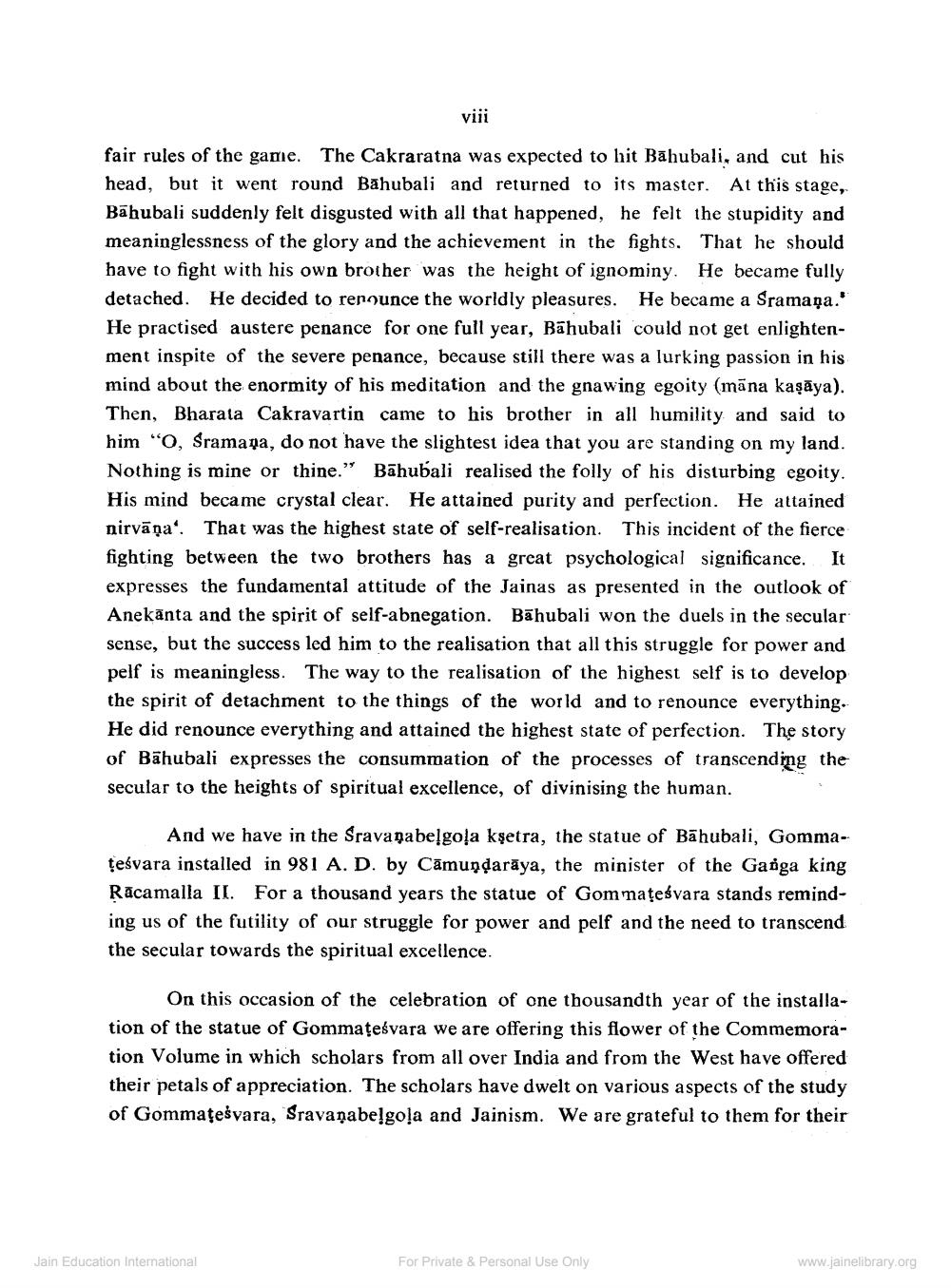Book Title: Gommateshvara Commemoration Volume Author(s): T G Kalghatgi Publisher: Parshwanath Shodhpith Varanasi View full book textPage 9
________________ viii fair rules of the game. The Cakraratna was expected to hit Bahubali, and cut his head, but it went round Bahubali and returned to its master. At this stage, Bahubali suddenly felt disgusted with all that happened, he felt the stupidity and meaninglessness of the glory and the achievement in the fights. That he should. have to fight with his own brother was the height of ignominy. He became fully detached. He decided to renounce the worldly pleasures. He became a Sramaya." He practised austere penance for one full year, Bahubali could not get enlightenment inspite of the severe penance, because still there was a lurking passion in his mind about the enormity of his meditation and the gnawing egoity (māna kaṣāya). Then, Bharata Cakravartin came to his brother in all humility and said to him "O, Sramaņa, do not have the slightest idea that you are standing on my land. Nothing is mine or thine." Bahubali realised the folly of his disturbing egoity. His mind became crystal clear. He attained purity and perfection. He attained nirvana. That was the highest state of self-realisation. This incident of the fierce fighting between the two brothers has a great psychological significance. expresses the fundamental attitude of the Jainas as presented in the outlook of Anekanta and the spirit of self-abnegation. Bahubali won the duels in the secular sense, but the success led him to the realisation that all this struggle for power and pelf is meaningless. The way to the realisation of the highest self is to develop the spirit of detachment to the things of the world and to renounce everything. He did renounce everything and attained the highest state of perfection. The story of Bahubali expresses the consummation of the processes of transcending the secular to the heights of spiritual excellence, of divinising the human. And we have in the Sravanabelgola kşetra, the statue of Bahubali, Gommafelvara installed in 981 A. D. by Camuodaraya, the minister of the Gadga king Racamalla II. For a thousand years the statue of Gommatesvara stands reminding us of the futility of our struggle for power and pelf and the need to transcend the secular towards the spiritual excellence. On this occasion of the celebration of one thousandth year of the installation of the statue of Gommatesvara we are offering this flower of the Commemoration Volume in which scholars from all over India and from the West have offered their petals of appreciation. The scholars have dwelt on various aspects of the study of Gommatesvara, Sravanabelgola and Jainism. We are grateful to them for their Jain Education International For Private & Personal Use Only www.jainelibrary.orgPage Navigation
1 ... 7 8 9 10 11 12 13 14 15 16 17 18 19 20 21 22 23 24 25 26 27 28 29 30 31 32 33 34 35 36 37 38 39 40 41 42 43 44 45 46 47 48 49 50 51 52 53 54 55 56 57 58 59 60 61 62 63 64 65 66 67 68 69 70 71 72 73 74 75 76 77 78 79 80 81 82 83 84 85 86 87 88 89 90 91 92 ... 198
